Produced by Lea & Perrins Introduced 1837 | Country Worcester, England | |
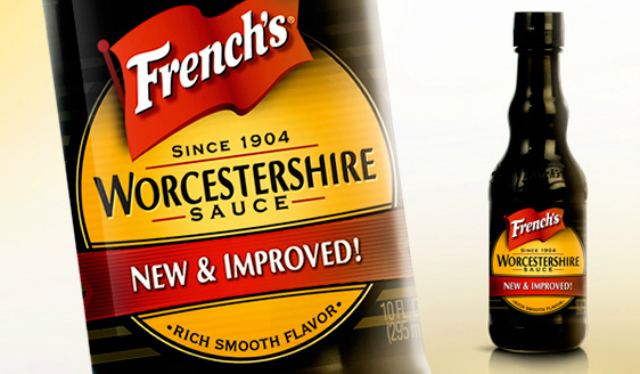 | ||
Previous owners 1930 - HP Foods1967 - Imperial Group1988 - Danone2005 - HJ Heinz Similar Sugar, Water, Ketchup, Mustard, Barbecue sauce | ||
Worcestershire sauce (/ˈwʊstərʃər/), (Merriam-Webster: ˈwu̇s-tə(r)-ˌshir-, -shər- also -ˌshī(-ə)r- ), frequently shortened to Worcester sauce (/ˈwʊstər/), is a fermented liquid condiment of complex mixture created by the Worcester chemists John Wheeley Lea and William Henry Perrins, who went on to form the company Lea & Perrins. The ingredients are allowed to mature for 18 months before being blended and bottled in Worcester, where the exact recipe is kept a secret.
Contents
- Homemade worcestershire sauce
- History
- Ingredients
- Around the world
- Asia
- Australia
- Brazil
- Denmark
- North America
- South Africa
- References

Lea and Perrins devised the recipe in the 1830s, however it wasn't to their liking and was set aside and forgotten about. It was not until the barrels were rediscovered many months later that the taste had mellowed into what is now known as Worcestershire sauce. A high court decided on July 26, 1876 that Lea & Perrins did not have the rights to the term Worcestershire sauce, and so the name is not trademarked. Lea & Perrins claims to be The Original Worcestershire sauce and may be the leading global brand of Worcestershire sauce, but other brands offer similar recipes. Some may be vegetarian or vegan, and may add other spices.
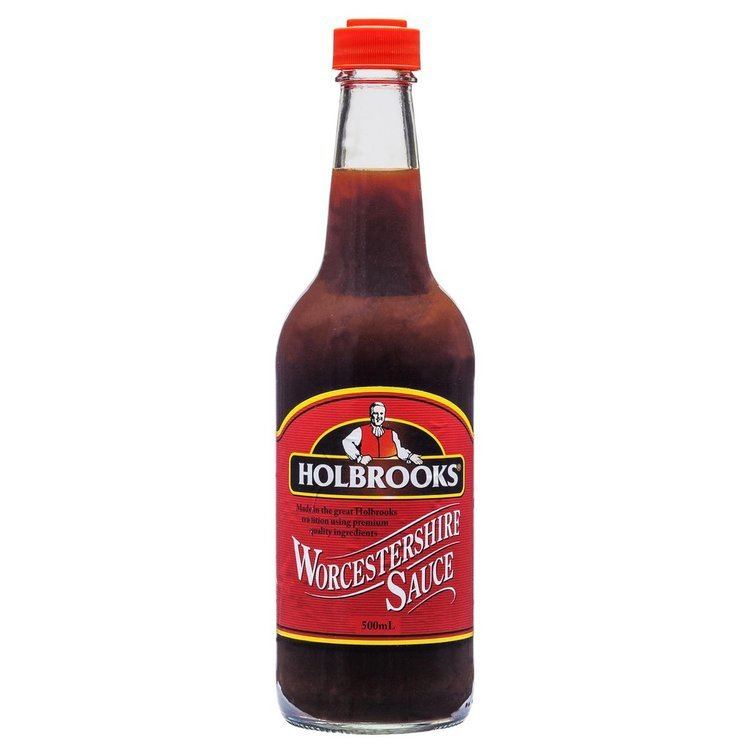
Worcestershire sauce is complex and unique in its flavour and aroma, and frequently used to enhance some food and drink recipes. For example, it is often an ingredient in Welsh rarebit, Caesar salad, Oysters Kirkpatrick, deviled eggs, and sometimes an ingredient in chili con carne, beef stew or other beef dishes. The sauce is also used to flavour cocktails such as the Bloody Mary or Caesar.
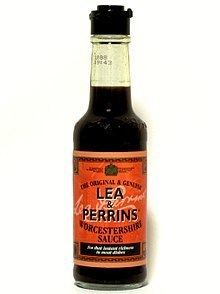
Homemade worcestershire sauce
History

A fermented fish sauce called garum was a staple of Greco-Roman cuisine and of the Mediterranean economy of the Roman Empire, as the first-century encyclopaedist Pliny the Elder writes in his Historia Naturalis and the fourth/fifth-century Roman culinary text Apicius includes garum in its recipes. The use of similar fermented anchovy sauces in Europe can be traced back to the 17th century.
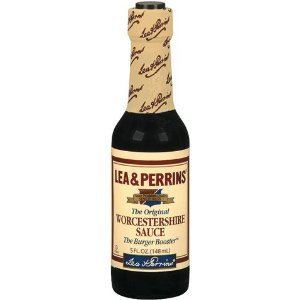
The Lea & Perrins brand was commercialised in 1837 and has continued to be the leading global brand of Worcestershire sauce. The origin of the Lea & Perrins recipe is unclear. The packaging originally stated that the sauce came "from the recipe of a nobleman in the county". The company has also claimed that "Lord Marcus Sandys, ex-Governor of Bengal" encountered it while in India with the East India Company in the 1830s, and commissioned the local apothecaries to recreate it. However, author Brian Keogh concluded in his privately published history of the Lea & Perrins firm on the 100th anniversary of the Midland Road plant, that "No Lord Sandys was ever a governor of Bengal, or as far as any records show, ever in India."
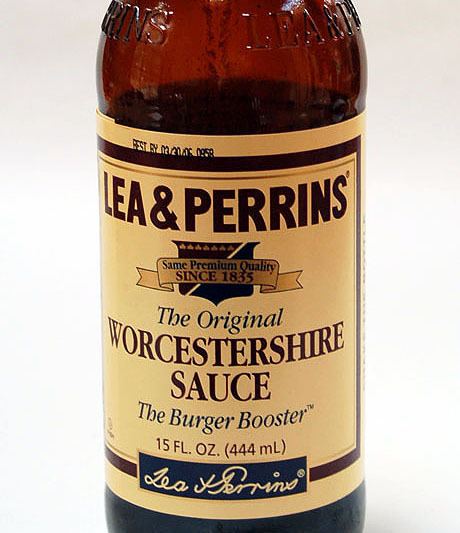
"Lord Marcus Sandys" may refer to Arthur Moyses William Sandys, 2nd Baron Sandys (1792–1860) of Ombersley Court, Worcestershire, who was a Lieutenant-General and a member of the House of Commons at the time of the legend. The first name may be a confusion of his brother and heir, Arthur Marcus Cecil Sandys, 3rd Baron Sandys (1798–1863), although he did not succeed to the title until 1860, when the sauce was already established on the British market. The barony in the Sandys family /ˈsændz/ ("sands") had been revived in 1802 for the second baron's mother, Mary Sandys Hill, so at the date of the legend, in the 1830s, "Lord" Sandys was actually a Lady. No identifiable reference to her could possibly appear on a commercially bottled sauce without a serious breach of decorum. A version of the story was published by Thomas Smith in 1885:
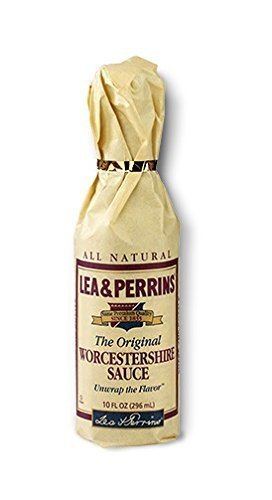
We quote the following history of the well-known Worcester sauce, as given in the World. The label shows it is prepared "from the recipe of a nobleman in the county." The nobleman may be Lord Sandys. Many years ago, Mrs. Grey, author of The Gambler's Wife and other novels, was on a visit at Ombersley Court, when Lady Sandys chanced to remark that she wished she could get some very good curry powder, which elicited from Mrs. Grey that she had in her desk an excellent recipe, which her uncle, Sir Charles, Chief Justice of India, had brought thence, and given her. Lady Sandys said that there were some clever chemists in Worcester, who perhaps might be able to make up the powder. Messrs. Lea and Perrins looked at the recipe, doubted if they could procure all the ingredients, but said they would do their best, and in due time forwarded a packet of the powder. Subsequently the happy thought struck someone in the business that the powder might, in solution, make a good sauce. The profits now amount to thousands of pounds a year.
According to historian and Herald for Wales, Major Francis Jones, the introduction of the recipe can be attributed to Captain Henry Lewis Edwardes (1788–1866). Edwardes, originally of Rhyd-y-gors, Carmarthenshire, was a veteran of the Napoleonic wars and held the position of Deputy-Lieutenant of Carmarthenshire. He is believed to have brought the recipe home after travels in India. The article does not say how the recipe found its way to Messrs Lea and Perrins.
When the recipe was first mixed at the pharmacy of John Wheeley Lea and William Henry Perrins, the resulting product was so strong that it was considered inedible and the barrel was abandoned in the basement. Looking to make space in the storage area a few years later, the chemists decided to try it again, and discovered that the sauce had fermented and mellowed and was now palatable. In 1838 the first bottles of "Lea & Perrins Worcestershire sauce" were released to the general public. On 16 October 1897, Lea & Perrins relocated manufacturing of the sauce from their pharmacy to a factory in the city of Worcester on Midland Road, where it is still manufactured. The factory produces ready-mixed bottles for domestic distribution and a concentrate for bottling abroad.
In 1930, the Lea & Perrins operation was purchased by HP Foods, which was in turn acquired by the Imperial Tobacco Company in 1967. HP was sold to Danone in 1988 and then to Heinz in 2005.
Ingredients
The ingredients of a traditional bottle of Worcestershire sauce sold in the UK as "The Original & Genuine Lea & Perrins Worcestershire sauce" are:
The "flavourings" are believed to include soy sauce, lemons, pickles and peppers.
Notes from the 1800s were found dumped in a skip in 2009 by company accountant Brian Keogh. The documents are to be placed on display at the Worcester City Art Gallery & Museum.
Many Worcestershire sauces contain anchovies, which is of concern for people with fish allergies, vegetarians, vegans and others who do not wish to eat fish. The Codex Alimentarius recommends that prepared food containing Worcestershire sauce with anchovies include a label warning of fish content although this is not required in most jurisdictions. The US Department of Agriculture has forced the recall of some products with undeclared Worcestershire sauce. Several brands sell anchovy-free varieties of Worcestershire sauce, often labelled as vegetarian or vegan. Generally, Orthodox Jews refrain from eating fish and meat in the same dish, so cannot use traditional Worcestershire sauce to flavour meat. However, certain brands are certified to contain less than 1/60th of the fish product and can be used with meat.
A teaspoon of low-sodium Worcestershire sauce available in the United States has:
Around the world
Many other brands produce their own version of Worcestershire sauce to pitch on sale against the original Lea & Perrins product.
Asia
In Thailand, the Lea & Perrins Original Worcestershire sauce on sale is, according to its label, imported from England.
In Indonesia, the name for Worcestershire sauce is kecap Inggris meaning "English 'fermented sauce'". It is also called "saus Inggris" meaning English sauce.
In Cantonese cuisine and Hong Kong Cuisine, Worcestershire sauce was introduced in the 19th century via Hong Kong and is today used in dim sum items such as steamed beef meatballs and spring rolls. The Cantonese name for this sauce is gip-jap (Chinese: 喼汁; Jyutping: gip1 zap1; Cantonese Yale: gīp jāp). It is also used in a variety of Hong Kong-style Chinese and Western dishes.
In Shanghai cuisine, the use of Worcestershire sauce spread from European-style restaurants in the 19th and 20th centuries to its use as an ingredient in ubiquitous Eastern European-inspired dishes, such as Shanghai-style borscht, and as a dipping sauce in Western fusion foods, such as Shanghai-style breaded pork cutlets. It is used for Chinese foods such as the shengjian mantou, which are small, pan-fried pork buns. In Shanghai, Worcestershire sauce is called là jiàngyóu (Chinese: 辣酱油; literally: "spicy soy sauce"). As imported Worcestershire sauce became scarce in Shanghai after 1949, a variety of local brands appeared. These are now in turn exported around the world for use in Shanghai-style dishes. Lea & Perrins has in recent years established a plant in Guangdong, China, thus increasing availability of the original variety in China. However, it does not have a dominant market share compared to the native-grown varieties.
In Japan, Worcestershire sauce is labelled "Worcester" (rather than Worcestershire) in katakana. Thicker, Worcestershire sauce-based sauces are manufactured in Japan under brand names such as 'Bulldog', which reflect its English origins, but this is a brown sauce more similar to HP Sauce rather than any type of Worcestershire Sauce. A thicker variety of the sauce is commonly known as tonkatsu sauce and most often used as a condiment for tonkatsu (fried, breaded pork cutlets). Unlike Worcestershire sauce, tonkatsu sauce is completely vegetarian. Both the dish and the sauce are thought to have derived from English cuisine imported into Japan in the 19th century. Japanese Worcester sauce (pronounced as Usutā sōsu) is made from purees of fruits and vegetables such as apples and tomatoes, with sugar, salt, spices, starch and caramel. It commonly accompanies western-influenced yōshoku dishes such as the aforementioned tonkatsu and korokke. Yakisoba sauce, and okonomiyaki sauce are also variants of Worcestershire sauce, often thicker and sweeter than the original.
Australia
In Australia, there are several manufacturers of Worcestershire sauce, including Holbrooks, Lionel Brand from Taringa in Brisbane, and Crockershire brand made in Harden, NSW.
Brazil
In Brazil, Worcestershire sauce is referred to as molho inglês (literally English sauce). The original Lea & Perrins brand is readily available in shops, supermarkets and restaurants in Brazil but is more expensive than brands made locally.
Denmark
In Denmark, Worcestershire sauce is commonly known as Engelsk Sauce, meaning English sauce.
North America
In the United States, Lea & Perrins Worcestershire sauce differs from the British recipe. Its ingredients are listed as: distilled white vinegar, molasses, sugar, water, salt, onions, anchovies, garlic, cloves, tamarind extract, natural flavourings, chili pepper extract. The main difference is the use of distilled white vinegar in place of malt vinegar, as well as three times as much sugar (measured in carbohydrates) and slightly more than three times as much sodium per gram. (The US nutrition label cites a teaspoon as one serving in contrast to the British/Canadian "one tablespoon." Nutrients cited are normalized.)
A thicker variety is also sold for the US market. The US version is packaged differently from the British version, coming in a dark bottle with a beige label and wrapped in paper. Lea & Perrins USA claims this practice is a vestige of shipping practices from the 19th century, when the product was imported from England, as a measure of protection for the bottles. The producer also claims that its Worcestershire sauce is the oldest commercially bottled condiment in the US.
In Canada, Lea & Perrins Worcestershire sauce is identical to the standard British version. It is imported from England and has the same bottle. The label is similar to the British version, but modified to include French text.
South Africa
In South Africa, Minnies Food Enterprise manufactures Worcester Sauce under its Minnies brand. However, Lazenby's Worcestershire Sauce remains popular, now manufactured under the Maggi brand name.
